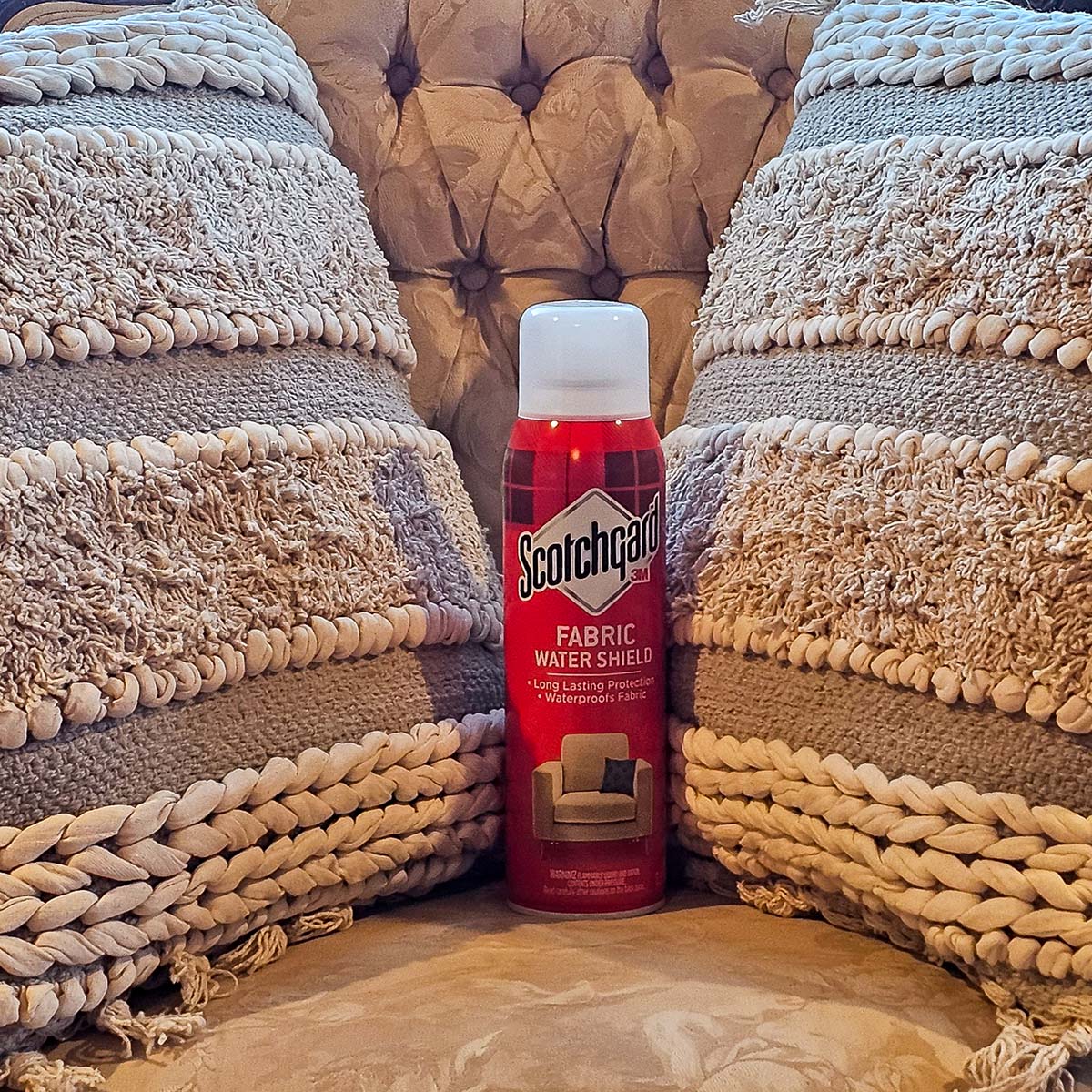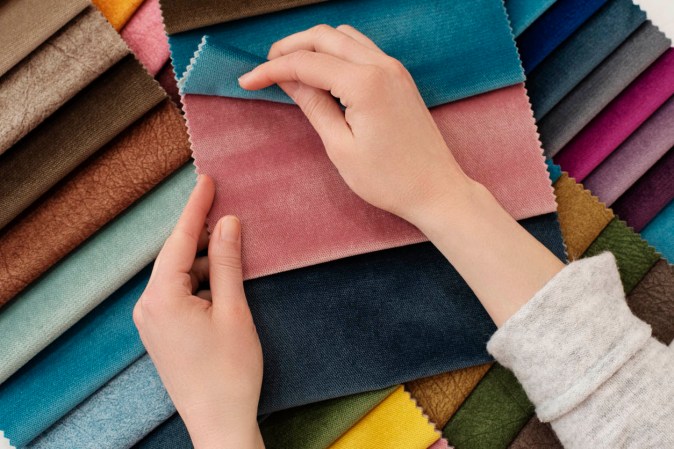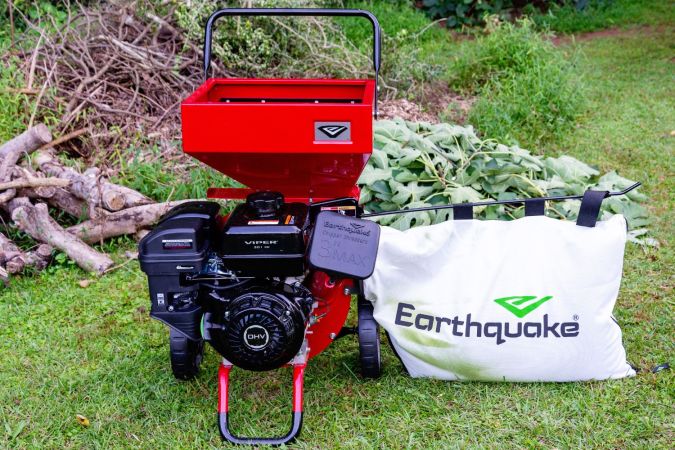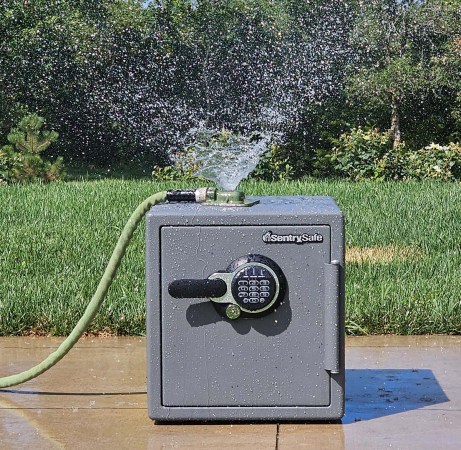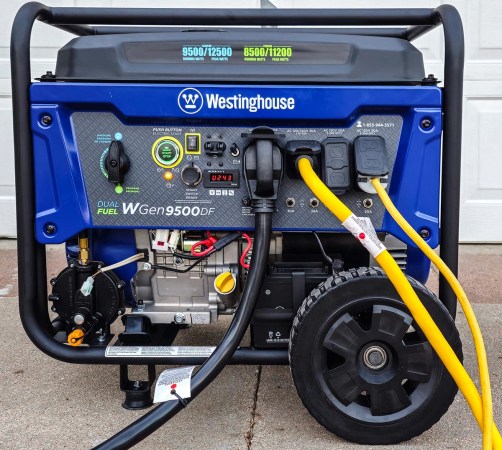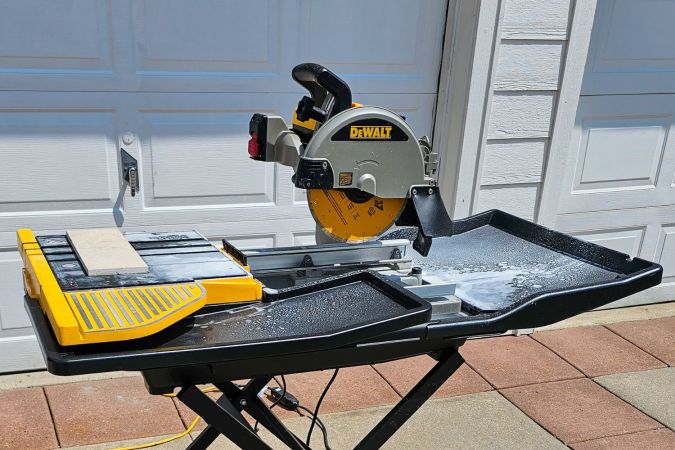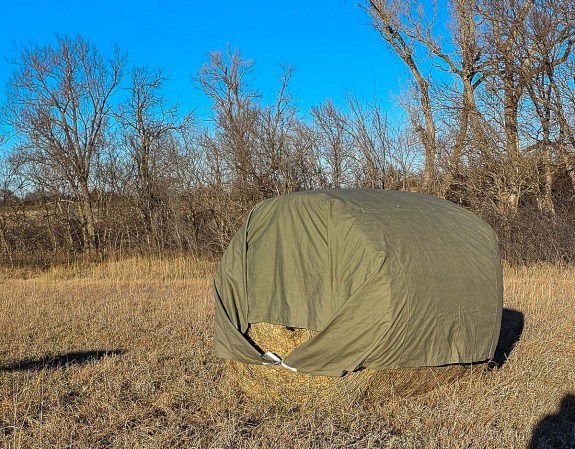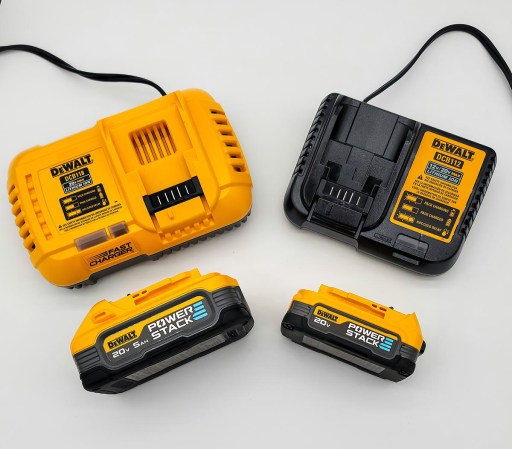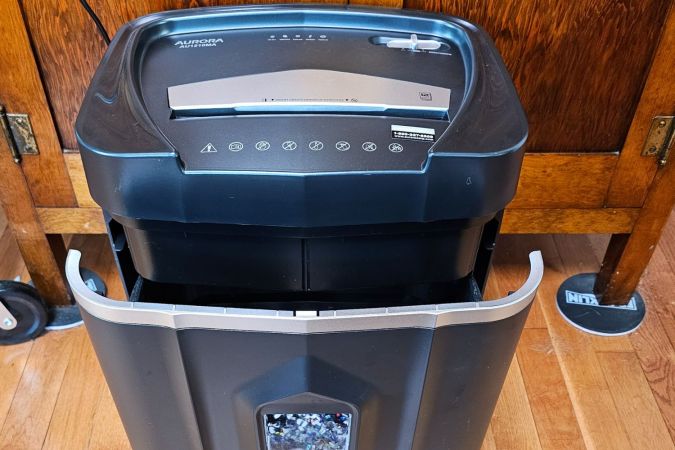We may earn revenue from the products available on this page and participate in affiliate programs. Learn More ›
Fabric protectors are designed to protect textiles of all types from spills, stains, and other potential damage. These products claim to prolong the life of upholstery, drapery, canvas, and more while reducing maintenance and cleaning. To find out if the claims were valid, I put several top-selling fabric protectors to the test.
As part of a larger, hands-on evaluation to determine the best fabric protectors, I applied Scotchgard’s Fabric Water Shield to multicolored upholstery fabric. Then, I applied common substances known to stain, including coffee and wine, to the test material. I also examined the treated fabric for water resistance.
The Scotchgard fabric protector took the top spot among all the products I tested, but it’s not perfect. Read on to learn about a few drawbacks users may want to consider before treating their furniture, draperies, and other fabric items.
Scotchgard Fabric Water Shield: At a Glance
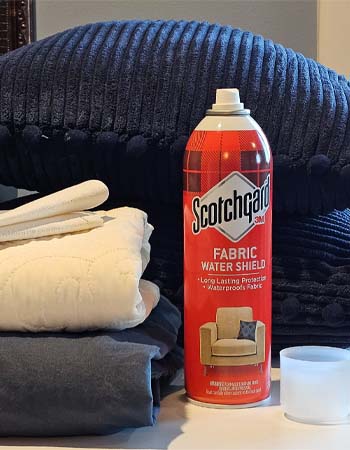
Rating: 7.5/10
SPECS
- Type: Aerosol spray
- Items suitable for treating: Upholstery, table linens, canvas luggage and shoes, most apparel, and dry-clean-only fabrics
- Product size: 13.5 ounces
PROS
- Strong water-based spill repellent keeps liquids from soaking into treated fabrics
- Simple and easy application process—spray on, let dry, and reapply
- Safe for delicate or dry-clean-only fabrics such as silk and wool
CONS
- May alter the color of the fabric, making it a darker and deeper tone
- Requires adequate ventilation during application due to the strong chemical smell
- Product must be reapplied after washing for continuous protection
Get the Scotchgard Fabric Water Shield at:
- Amazon for $13.28
- The Home Depot for $13.28
- Walmart for $17.30
- Target for $7.49 (10-ounce size)
What is Scotchgard fabric protector?
Scotchgard Fabric Water Shield is a spray-on fabric protector designed to safeguard various fabric items from water-based spills and stains. This product features water-shedding capabilities that allow users to sop up liquid spills before they can soak into the fabric. While Scotchgard fabric protector can be used on virtually any fabric item, it’s best suited for upholstery, table linens, draperies, canvas protection, backpacks, and luggage.
Scotchgard has a trusted reputation for producing protective solutions for everyday items. However, shoppers will want to keep in mind that this specific fabric protector is not suitable for leather, carpet, finished wood, and plastics.
I tested Scotchgard fabric protector by treating swatches of upholstery fabric with the product, followed by applying common liquids to both treated and untreated swatches to discover how well this fabric protector repelled the liquids. Then, 10 minutes after applying the liquids, I used a clean cloth to soak them up, mimicking what might happen in a real-world scenario.
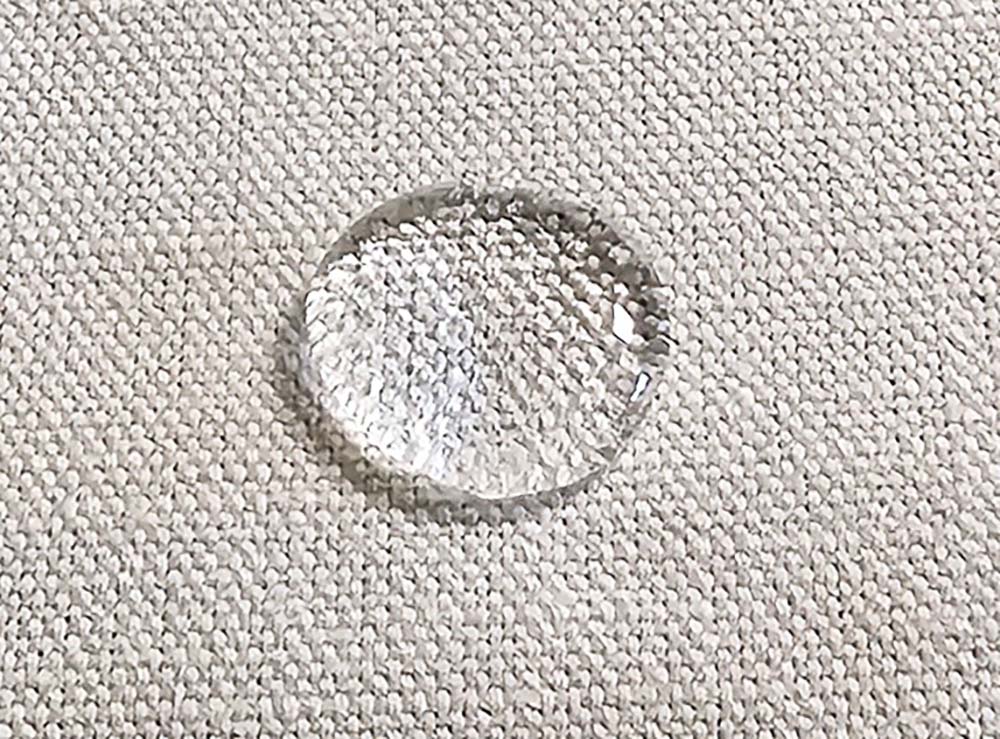
How easy is Scotchgard fabric protector to apply, and does it leave a residue?
Applying Scotchgard fabric protector spray is pretty straightforward. I found that spraying three light coats and letting each coat dry completely in between worked well in my tests. The manufacturer recommends spraying thoroughly about 6 inches away from the item being treated.
Shoppers will want to be aware of the strong chemical smell that occurs during use, and it’s essential to use the product in a well-ventilated space. It was windy outside the day I tested the fabric protector, so I had to spray indoors. The smell was strong and off-putting; I opened the windows, sprayed quickly, and then left the room while the product dried. Once it dried, the smell in the room was not as strong. However, if I sniffed the treated fabric—even after 24 hours—I could still smell the chemical, so I would personally not choose this fabric protector for treating clothing or an item someone might have their face near, such as throw pillows.
Another downside is that this product might alter a fabric’s color. My fabric test swatches were slightly darker after I treated them, which was a disappointment. The manufacturer does state directly on the can that the product might “give fabric a darker, richer tone.” As with most products applied to carpet or fabric, testing Scotchgard fabric protector on a small, hidden piece of fabric is recommended before treating an entire item.
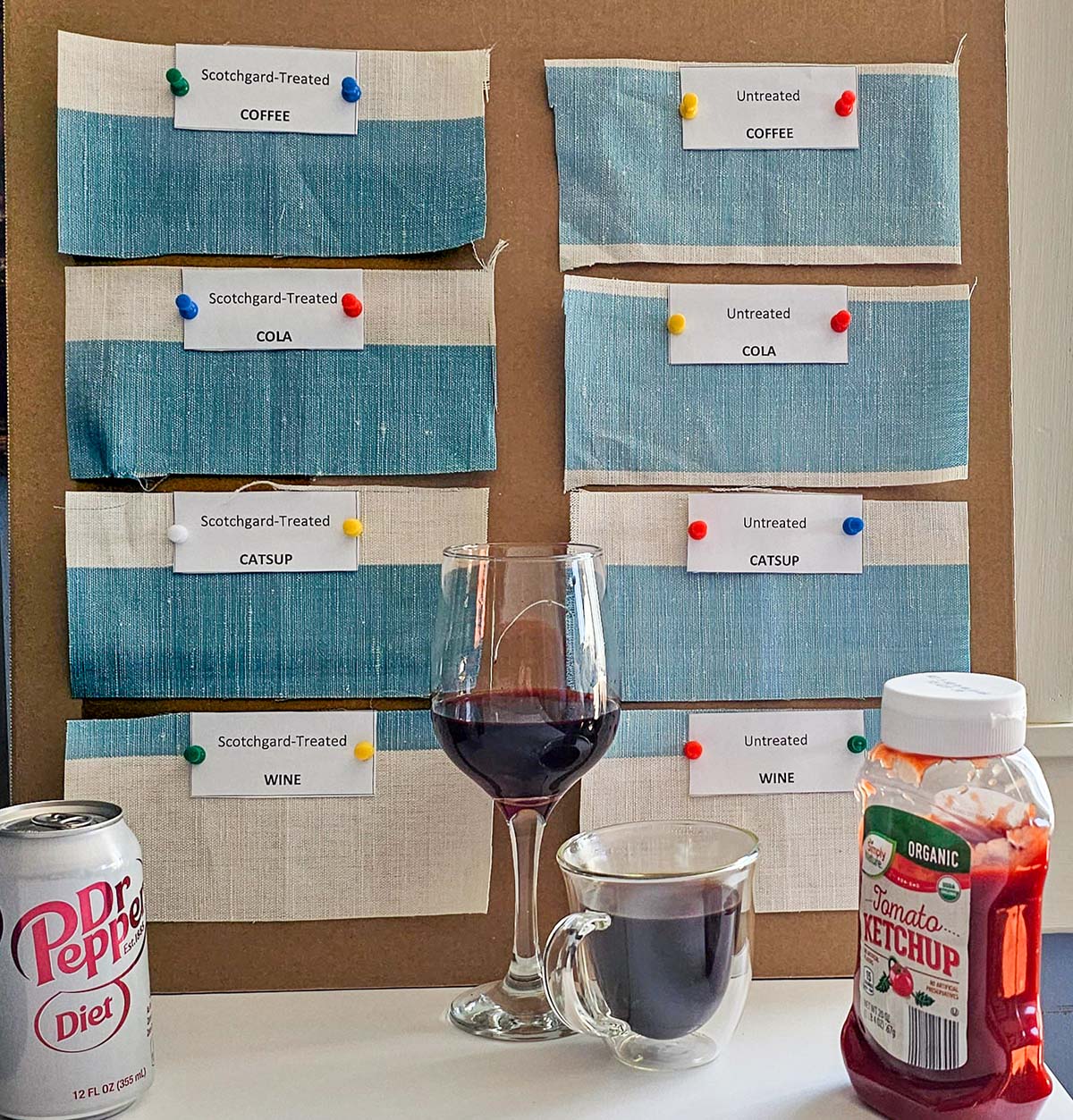
Scotchgard Fabric Protector Repels Spills and Stains
To put Scotchgard’s stain-repelling claims to the test, I got down and dirty with some wine, catsup, cola, and coffee. I used both treated and untreated fabric swatches, labeling them to organize my testing.
After I let those spills seep into the fabric for 15 minutes, the results were clear—the Scotchgard-treated swatches were better able to repel the stains than the untreated ones. However, despite the protection, that pesky catsup left a faint mark on the treated swatch. The coffee test surprised me the most. Coffee is notorious for ruining fabrics, yet with Scotchgard treatment, the coffee practically wiped off the swatch like it was never there—I was impressed.
I left a water droplet on a treated fabric swatch for a separate water test and waited. And waited. Two hours later, that droplet was still beading on the surface, refusing to seep in. It’s safe to say that this Scotchgard fabric protector performs as advertised—it effectively protects a variety of fabrics against stains and spills. Of course, it’s always wise to clean up any spills as soon as they happen for the best shot at preventing a stain.
Which fabrics can Scotchgard fabric protector safely treat?
Fabrics are coded by how they should be cleaned. The manufacturer states that Scotchgard fabric protector can be used on all fabrics except “X” coded fabrics, which primarily include leather and some types of velvet. An “X” on the label of a fabric item means it cannot safely be cleaned with water or liquid cleaning products, and it should not be treated with Scotchgard Fabric Water Shield. Scotchgard lists several items that are safe for treating with its fabric protector, including curtains, pillows, luggage, backpacks, dresses, ties, shirts, and more.
In my tests, the product did not change the feel of the fabric—it was still just as supple as before application. However, Scotchgard cautions that its fabric protector must be reapplied after laundering a fabric, and my testing confirmed those instructions. After the initial round of tests, I washed the test swatches and then randomly applied liquids again. This time, the liquids soaked right in and stained the fabric.
This result reveals that the best items for treatment with Scotchgard fabric protector would be those rarely or never laundered, such as upholstered furniture and draperies. It’s unlikely I’d want to treat any of my clothing because I’d have to re-treat after every washing, and I’m not fond of the lingering smell on the fabric.
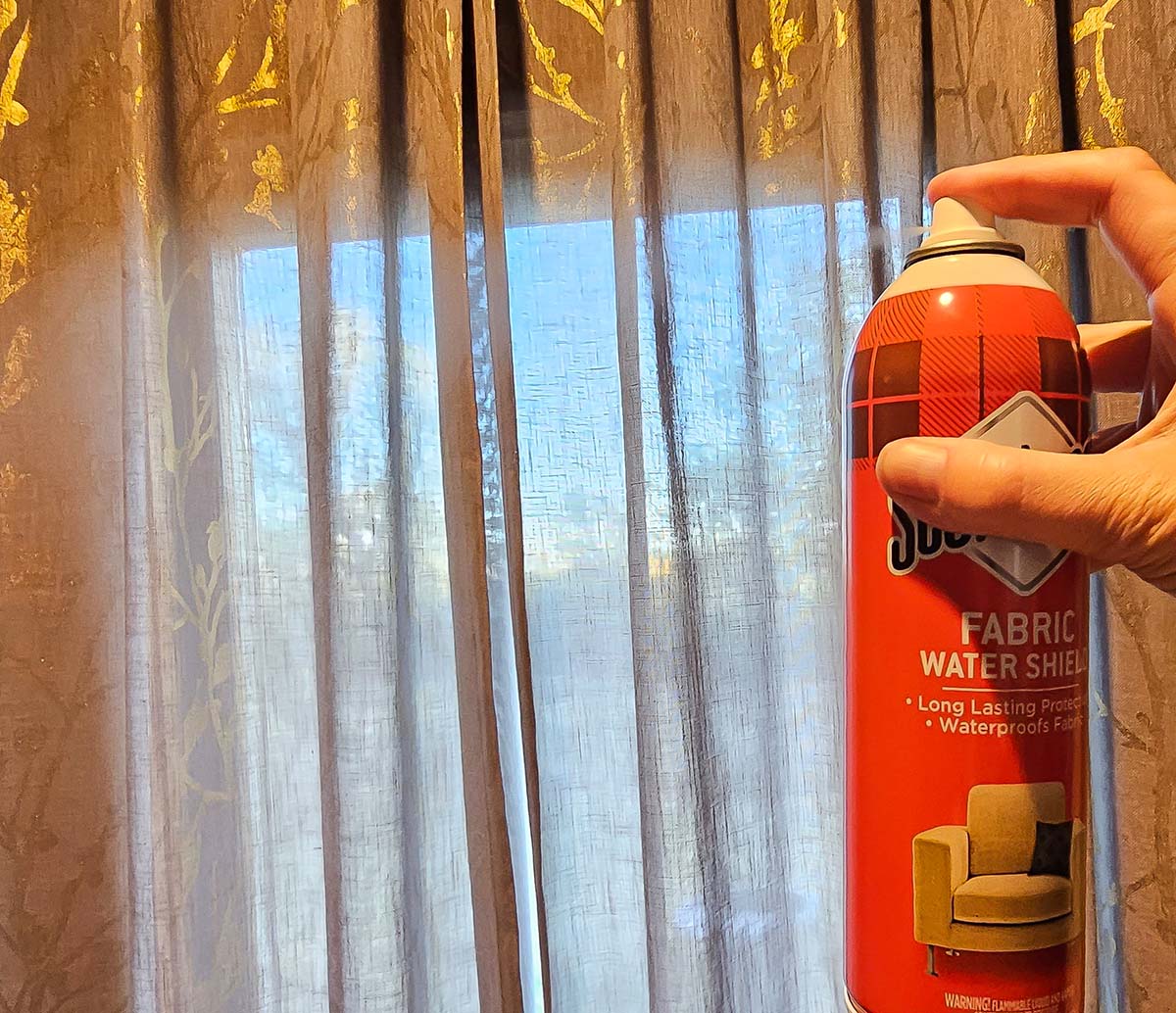
Scotchgard Fabric Protector On Various Fabrics
Based on the product’s characteristics and my testing experience, Scotchgard fabric protector is best suited for consumers who aim to safeguard household items that are not regularly laundered or washed, including upholstered furniture and draperies.
Shoppers seeking to protect other items that are not frequently laundered, such as backpacks, luggage, and decorative textiles (including curtains and pillows) might benefit from the repellent ability of this fabric protector. It is a valuable asset for maintaining the pristine condition of these items over extended periods.
However, this product may not be the ideal choice for shoppers looking to treat frequently washed clothing, as the necessity for frequent reapplication and potential alteration of the fabric’s color might present challenges. Plus, the smell is not only very strong but also lingers on the fabric.
Users who have a specific focus on long-term fabric protection and minimal laundering requirements will likely find the Scotchgard fabric protector to be a valuable and effective solution for their fabric-maintenance needs.
Where to Buy Scotchgard Fabric Protector
Get the Scotchgard Fabric Water Shield at:
- Amazon for $13.28
- The Home Depot for $13.28
- Walmart for $17.30
- Target for $7.49 (10-ounce size)
Meet the Tester
Glenda Taylor is a product tester and writer specializing in the construction, remodeling, and real estate industries. She and her husband own a general contracting company, and Taylor is experienced in both residential and commercial building applications. She tests a wide range of power tools as well as other home improvement, household, and lawn-and-garden products.

